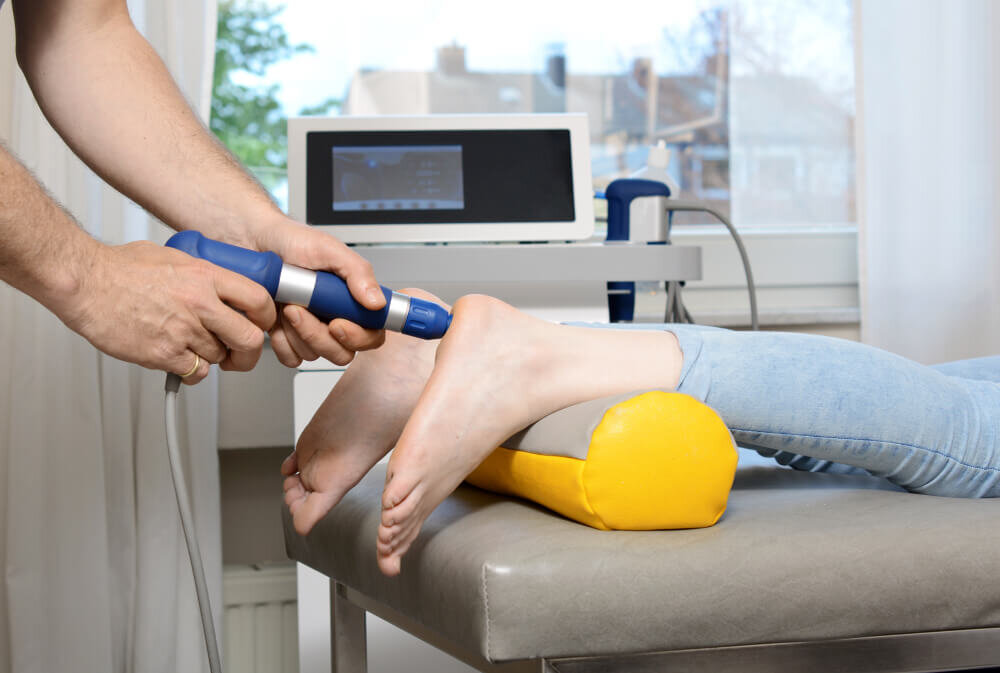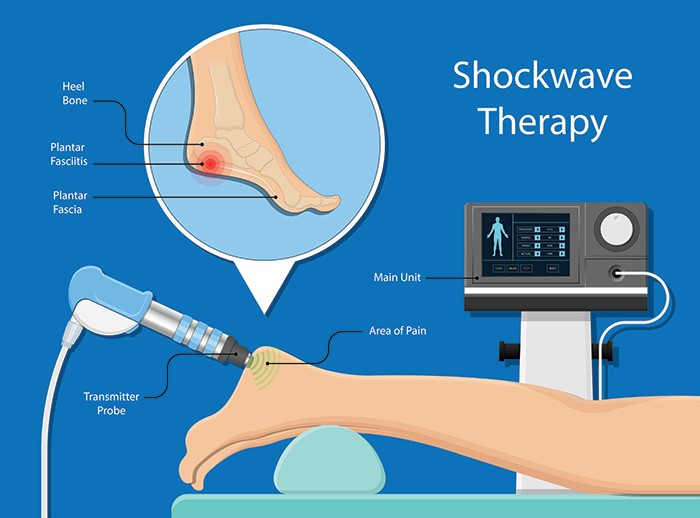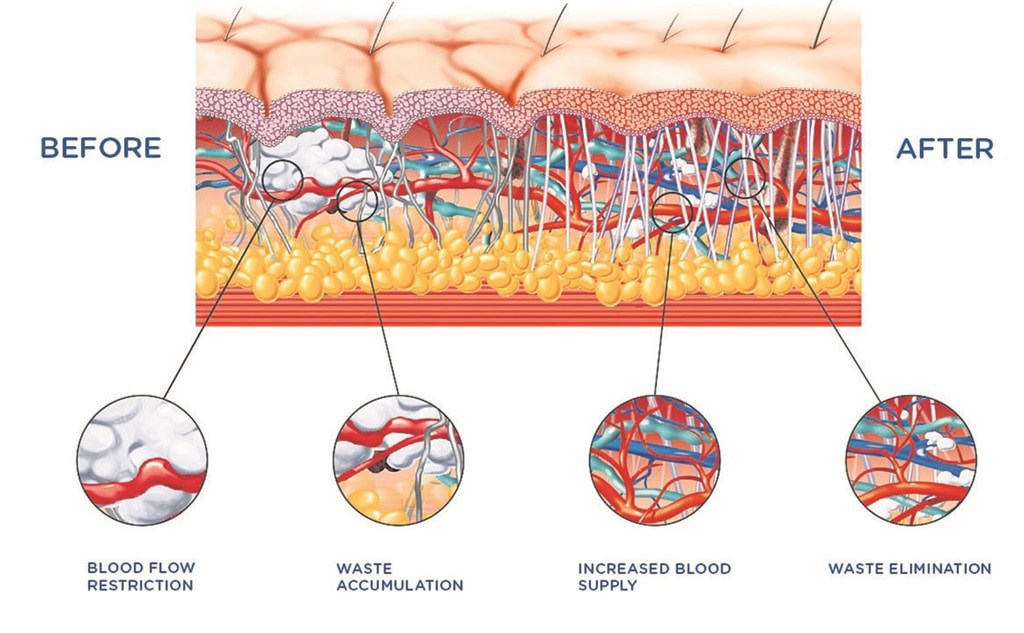What is Shockwave Therapy?

Shock Wave Therapy is a non-invasive procedure often used to treat injured bones, joints, muscles, tendons and other soft tissues. With no need for painkillers, shock wave therapy can offer fast pain relief and aid recovery for a range of chronic conditions including:
- Repetitive strain injury (RSI)
- Achilles Tendonitis
- Plantar Fasciitis
- Tennis Elbow
- Medial Tibial Stress Syndrome (otherwise known as shin splints)
- Hamstring issues
- Any other chronic soft-tissue
- Joint conditions causing long-term pain
How Does Shock Wave Therapy work?
Shockwave therapy is delivered directly onto the affected area via the use of a ‘generator’ or device, using low-energy acoustic waves that penetrate the skin and treat the immediate area.
Most treatments are applied by a therapist using a hand-held device, which turns compressed air into low-energy sound waves. Light pressure is applied and the device is moved across the damaged areas that require treatment.
Shock wave therapy has two main ‘modes of action’ that can help with persistent pain.
Firstly, the shock waves work to ‘desensitise’ nerve endings which can immediately reduce pain in the local area. Secondly, the waves stimulate blood flow in the area, causing a small amount of localised inflammation.
In the days immediately following the treatment, the body naturally tries to heal the inflammation and in doing so, encourages the regeneration of cells, repairing damaged tissue and reducing pain.

Shock wave therapy can also help with issues relating to scar tissue. Because scar tissue is much denser – and much less elastic – than normal tissue, the sound waves can help break it down, improving mobility and reducing discomfort.
Similarly, the waves can be used to break down ‘disorganised’ tissue or any build-up. While these sound waves are radial, this should not be confused with the types of shock wave therapy that are typically available – ‘radial’ and ‘focused’.
Radial Wave Therapy is the most common type of shock wave therapy, although Focused Wave Therapy is growing in popularity due to the treatment options, depth and precision it can offer acute cases.
Below we explore some of the differences between Radial Shock Wave Therapy (RSWT) and Focused Shock Wave Therapy (FSWT), we must first understand what they are.

What is Focused Shock Wave Therapy?

Focused shock wave therapy – sometimes known as Focused Shockwaves – is able to provide more depth penetration for deeper tissue than radial waves, focusing its output into more localised, deeper areas.
These types of waves are generated through the use of a coil, which creates magnetic fields when a current is applied. This generates a pressure wave that can move through the medium without any loss of energy in a focused zone.
Fortunately, the site of actual wave generation experiences a minimal impact, limiting the damage to surface skin and underlying soft tissues.
While radial waves are applied all over a local area, FSWT is only applied at defined points within the body, which can be adapted depending on the depth that is required.
In some cases, focused shock wave therapy is used in conjunction with radial therapy – typically when a patient’s pain levels can’t tolerate radial wave therapy or could benefit from a hybrid approach.
